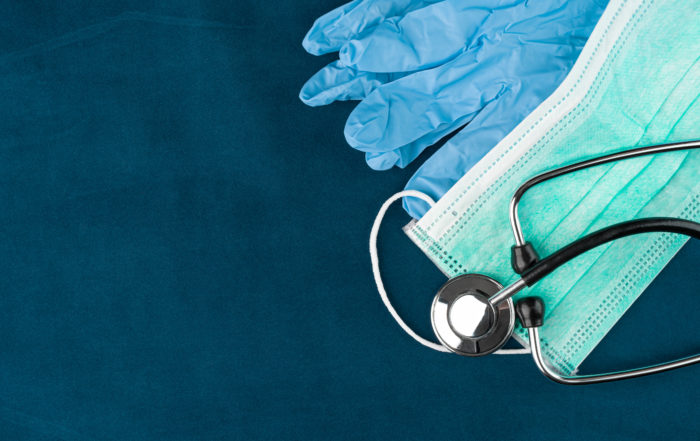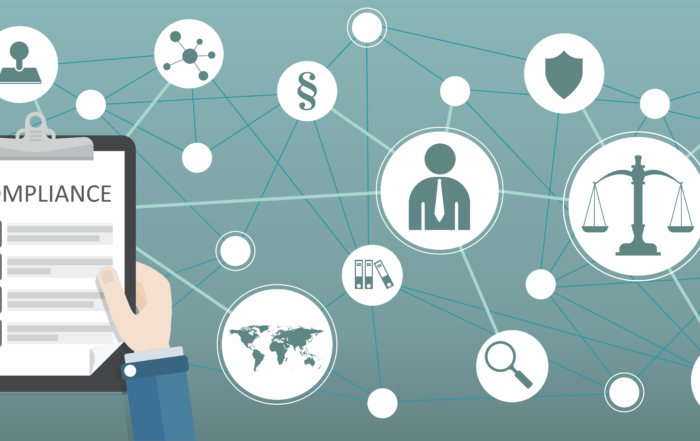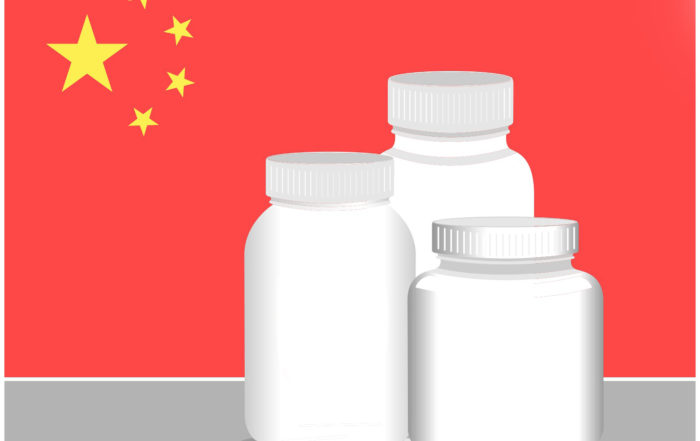
Development and Regulation of Innovations: In the Current State of Facts vs. Public Opinions, the Truth Does Not Always Prevail
By Nicholas M. Benetatos, Michael Frohbergh, Sangeeta Abraham, and Kevin Ong
Introduction
Over the last several years, the medical product industry, along with the perceived role and effectiveness of FDA’s oversight, has come under public scrutiny. Portrayals in the media can at times contain highly sensationalized or anecdotal accounts of negative patient experiences with a medical product. These accounts may not accurately represent the overall performance of these medical products in the larger population of patients, many of whom substantially benefit. The extensive regulatory processes and procedures required before and after marketing a medical product are also often unmentioned, overlooked, or misunderstood in this context.
In the U.S., FDA’s mission aspires to both protect and advance public health by ensuring the safety, efficacy, and security of medical products and therapeutics, as well as helping to speed innovations that make those products safer and more effective or efficacious.[1] Regarding medical devices, the formal definition of one encompasses a wide breadth of technologies from simple tongue depressors to complex programmable pacemakers[2] that provide life-sustaining functionality. The extent of the testing and evaluations required to gain access to the market depends largely on the device’s general risk category and intended use. As such, regulators carefully weigh the risk-benefit of medical devices based on the totality of available evidence. Similar concepts apply to other medical products, such as biologics and drugs. Additionally, in the post-market setting, medical product firms are required to conduct vigilance activities to identify and report adverse events, as well as collect data regarding the performance of a product.[3]
Problem Statement and Supporting Evidence
Media Coverage
Due to the shift of multimedia towards an “on-demand” availability to the general public and the pervasiveness of social media, more consumers are now able to access a larger amount of media, some of which is unfiltered and not independently verified. This increase in availability of media, particularly social media, has shifted the exposure of opinions to a much larger segment of the population. Historically, mostly written media only reached a smaller and more limited audience.
Documentaries such as “The Bleeding Edge,” which aired on Netflix in 2018, focused on individual cases where the suspected adverse event to the patient was one of the most severe complications of the product. In any case where such severe adverse events occur, it is of utmost importance for the manufacturer to perform thorough investigations into the cause of the event to determine whether it was a patient-related, product-related, surgical, or clinical issue. Manufacturers and regulatory bodies employ rigorous pre-market evaluation, post-market surveillance, and adverse event reporting for just this purpose. However, with a focus on the worst-case scenarios and without consideration of these important product lifecycle activities, one can mistakenly presume that these adverse events are affecting an alarmingly large amount of the patients. FDA requires manufacturers to monitor all complaints received from the marketplace. Quality systems often prescribe that when events reach certain threshold levels, a trigger is initiated that will prompt an immediate response, such as investigation or escalation. If necessary, corrective or preventative actions may be mandated, or the product may be recalled.
Along with documentaries, there are also news stories and daytime talk show specials that portray the medical product industry in a poor light.[4],[5] These specials usually include interviews with afflicted patients who have experienced a suspected adverse event from their medical product. What these interviews do not contain are scientific, clinical, or regulatory peer-reviewed opinions and data. There are a number of factors that could lead to adverse events in medical products, including patient-specific biological reactions, surgical complications, and improper rehabilitation post-surgery.
More recently, there has been significant media coverage of criminal charges raised against medical product companies whose leaders have been alleged to mislead the public into believing the existence and reliability of their technology.[6] Episodes like these shed a negative light on not only the industry, but also the regulation of medical technologies.
Below are some historical and current examples of medical technologies that have been the subject of public exposure, be it through regulatory panel meetings, government involvement, or lay press pieces.
Surgical Mesh
Pelvic prolapse is a condition where the internal abdominal organs begin to protrude into the vaginal cavity, which can be caused by age, stress, and trauma. Stress urinary incontinence is a condition where urine leaks out with sudden pressure on the bladder and urethra, due to weakened vaginal and pelvic muscles. A common treatment for these conditions is to use synthetic or biological meshes to help support the prolapsing organs in pelvic prolapse or to support the urethra in stress urinary incontinence. Although these implant devices are successful in the majority of patients,[7] there are instances where treatment fails and discomfort, pain, and swelling—which may or may not have been present prior to the surgery— persists and leads to surgical removal of the mesh.
The debate over the safety and effectiveness of surgical meshes has brought governments into the fold. The use of surgical mesh for some urogynecological applications is now restricted in some countries, such as Australia[8] and New Zealand.[9] In 2018, Scotland issued a complete halt to all transvaginal mesh procedures while they were developing and implementing new surgical protocols.[10] Some of these devices have also been up-classified to Class III devices in Australia and the U.S.[11],[12] Confusion over which products have been implicated has significant bearing on access to care for many patients, particularly when mid-urethral surgical meshes are considered the gold standard for surgical management of stress urinary incontinence.[13]
Metal-on-Metal Hip Replacement
One of the most common orthopedic implant procedures used to date is total hip replacement (THR). There have been many evolutions and types of THR throughout the decades, but one type, a metal-on-metal THR, saw a resurgence in use due to clinical concerns with dislocations in traditional THRs from the growing use in younger or more active patients.[14] Over the last five or more years, growing concerns have been raised about the production of metal particles and whether these cause biological reactions or metal hypersensitivity. FDA convened an advisory committee meeting in 2012,[15] which ultimately led to the up-classification of the metal-on-metal hips in 2016.[16] This reclassification has more recently expanded to other types of hip implants with similar questions about sensitivity to metal byproducts, even for device designs that have been used with clinical success for many years. Concerning to public health is the question raised by clinicians about whether patients are undergoing premature surgery to remove the devices based on some diagnostic measure of metal levels, when the patients do not present with any symptoms.[17]
Vaccines
In 1998, a landmark study was published in The Lancet that reported the onset of neuropsychiatric dysfunction following measles, mumps, and rubella immunization.[18] Based on this study, celebrities started to use their platforms to question the safety of vaccinations and further linking vaccinations to causing autism.[19] This has been described by some as the “golden halo effect,” in which a performer or athlete admired for their skill is somehow seen as more trustworthy in unrelated areas. This led to widespread anti-vaccine sentiments in the public,[20] which in turn also put the rest of the population at risk and may have led to measles outbreaks.[21] However, a twist in this tale occurred in 2010, when The Lancet ultimately retracted the landmark 1998 study over the inaccuracy of several elements of the study, including scientific misrepresentations of the data.[22] Moreover, Britain’s General Medical Council ruled that the patient selection was biased and that some of the study was commissioned and funded by lawyers representing parents who were actively involved in lawsuits against vaccine manufacturers.[23] Additional allegations included falsification of data and selective picking of certain data.[24] This is a proverbial tale of how a single study can be sensationalized and become “viral,” ultimately leading to potential public health risks.
Cybersecurity
As technology rapidly advances, medical products are increasingly connected to the internet, hospital networks, and other medical products—enabling features that improve health care and increase the ability of health care providers to treat patients.[25] These same features also inherently increase the potential risk of potential cybersecurity threats. Medical products, like other computer systems, can be vulnerable to security breaches with the potential to impact the safety or effectiveness. Many of these threats and vulnerabilities cannot be eliminated and need to be considered in the overall context of the risk-benefit proposition for a medical product used to treat a particular disease and patient population.
In the T.V. series Homeland, a character portrayed by actor Damian Lewis was seen to give terrorists a serial number with which they could hack the pacemaker of the fictitious vice president.[26] Media coverage as early as 2014 suggested the possibility of hijacking electronic implants and highlighted that patients using critical medical products such as pacemakers and interconnected diabetes management systems (e.g., insulin pumps, glucose sensors, etc.) could come under attack in a manner similar to that described by the fictitious television program.
In actuality, FDA has published numerous guidance documents on cybersecurity in medical products that detail content required in pre-market submissions, post-market management, and expectations regarding assessment and testing of potentially vulnerable software.[27], [28], [29] Additionally, FDA has engaged industry stakeholders through public workshops and has formed a new partnership with the Department of Homeland Security as part of a broader effort to enhance and protect patient safety. FDA has issued several public notices relating to cybersecurity of medical products, particularly with respect to the use of the internet to allow healthcare providers to download software updates for products and to wireless communication in older integrated products in which software pre-dates many current technical standards. In each of these cases, FDA reiterated that there are no reports of harm related to these issues,[30] and specifically stated that while risks do exist, “…increased use of wireless technology and software in medical devices can also offer safer, more convenient, and timely health care delivery.”[31] Once again we see a balance by regulatory authorities in understanding the risks and benefits for patients who stand to benefit greatly from the value these new technologies provide—while the media sensationalism focuses on specific instances of the highly improbable, if not impossible, scenario.
FDA Ends Alternative Summary Reporting Program
Recently, FDA issued public statements regarding efforts to increase transparency into post-market medical device reporting, the tool used by the agency to monitor performance, detect potential safety signals, and inform regarding the risk-benefit assessment of medical devices.[32] As part of these ongoing activities, FDA chose to end the alternative summary reporting (ASR) program, under which manufacturers of certain devices could request an exemption from the requirement to file individual medical device reports for certain events that are well-known and well-established risks. Media coverage of the ASR program describes “…a vast trove of hidden medical device injuries and malfunctions” with recent pieces suggesting that FDA, in an effort to cut down paperwork, allowed manufacturers to conceal hundreds of thousands of instances of serious injury information from the public.[33], [34] As is the case in many of the case studies presented here, several important facts relevant to the ASR program are not mentioned in these pieces. Of particular note, during the twenty-two-year history of the ASR program, only one-hundred-eight such exemptions were granted by FDA after evaluating and aligning that the particular risks to be reported were well known, well established, and appropriate. These exemptions applied to individual manufacturers for certain well-known events associated with specific devices, which were often already described in the product labeling available to health care professionals and patients. The ASR program allowed FDA to more efficiently review reports of well-known and well-understood adverse events to focus efforts and resources on new, or less understood, risks and to aid in the identification of new safety signals.
FDA Initiatives for Continuous Improvement of Medical Device Regulation
Media coverage often lacks information regarding more recent efforts by FDA to modernize and improve upon the existing tools for medical device surveillance in the post-market setting. For instance, FDA has established a unique device identification (UDI) system, in which medical devices are marked on their labels with a unique code that can be used to identify the device through its distribution and use in patients.[35] Device identifiers are stored in a public database, which now contains more than two million device records and enables patients and health care professionals to download information about medical devices. The agency has engaged in international efforts to facilitate a harmonized approach to adoption of UDI systems worldwide.
Additionally, FDA has worked since 2012 to develop a national evaluation system for health technology (NEST), which uses real-world data, including data sourced from UDIs, in a systematic way to rapidly identify and help address safety signals through active surveillance.[36] For example, analytical software algorithms can be used to evaluate large data sets on device performance and patient safety associated with routine clinical use.
Based on the examples provided above, we have seen the impact of media coverage wherein the speed and breadth of information shared regarding healthcare products, some of which have a well-established history of clinical use, can lead to public concern or even calls for halting product use. What does this mean for the future as it relates to newer and more complex areas of technology? The current scientific and regulatory landscape of newer technologies, such as human cells, tissues, and cellular and tissue-based products, provides insight into how FDA may steer the future direction of medical products. The examples below relate to emerging technologies that present promise for the next generation therapies, including gene and cell therapy as well as tissue engineering.
FDA Comprehensive Regenerative Medicine Policy
In November of 2017, FDA announced a comprehensive policy framework for the development and oversight of regenerative medicine products, including novel cellular therapies.[37] The framework—outlined in a suite of four guidance documents—builds upon FDA’s existing risk-based regulatory approach to more clearly describe what products are regulated as drugs, devices, and biological products. Furthermore, two of the guidance documents propose an efficient, science-based process for helping to ensure the safety and effectiveness of these therapies while supporting development in this area.[38],[39] The suite of guidance documents defines a risk-based framework for how FDA intends to focus its enforcement actions against those products that raise potential safety concerns. This modern framework is intended to balance the agency’s commitment to safety with mechanisms to drive further advances in regenerative medicine so innovators can bring new, effective therapies to patients as quickly and safely as possible.
Regenerative Medicine and Stem Cell Therapies
There has been a significant increase in the number of drugs and biologics companies, many largely focusing on regenerative medicine, in the United States over the past decade.[40] As the field has accelerated rapidly, regulatory bodies around the world have paid careful and close attention, particularly to the classification and oversight of these therapeutics. Particular focus has been given to topics such as minimal manipulation of autologous materials, cell and gene therapies, and viral vectors. As of now, personalized therapies such as stem cell injections have come into the purview of the public, where potential life-saving applications are envisioned as cures for diseases like Alzheimer’s, cystic fibrosis, and autism.
Because regenerative medicine is an emerging technology, the regulatory pathways have not been well established, leading some companies to intentionally or inadvertently promote their products inappropriately and conduct improper marketing. Recently, FDA has issued warnings targeting companies engaging in improper promotion, deviating from current good manufacturing (cGMP) practice, and failing to properly classify, register, or meet pre-market requirements of their product according to FDA guidelines.[41],[42]
Accuracy Issue Allegation with respect to Gene Therapies
The development of innovative, safe, and effective medical products, like cellular and gene therapies, promises enormous potential to treat previously untreatable diseases. As part of the approval process for biological products, FDA reviews extensive information submitted by manufacturers, including details of how the product is made in a reproducible manner, how it has been tested in animals, and how it has been investigated in human clinical trials to demonstrate its safety and efficacy.[43] It is the responsibility of every manufacturer to submit complete and accurate information in marketing applications for evaluation by FDA.
On May 24, 2019, FDA approved Zolgensma, a gene therapy product intended to treat children less than two years of age with spinal muscular atrophy (SMA) with bi-allelic mutations in the survival motor neuron 1 gene—the most severe form of SMA. SMA is a leading genetic cause of infant mortality. Subsequently, on June 28, 2019, following FDA’s approval of the product, the agency was informed by the product’s manufacturer about a data manipulation issue impacting the accuracy of certain data from product testing that was submitted in the biologics license application (BLA) and reviewed by FDA. FDA publicly stated that they remain confident that Zolgensma should remain on the market.[44] Out of the large amount of submitted information reviewed by the agency, the data accuracy concerns at this time are limited to only a small portion of the product testing data that was contained in the marketing application. These data did not change the agency’s positive assessment of the information from the human clinical trials. The totality of the evidence demonstrating the product’s effectiveness and its safety profile continues to provide evidence supporting an overall favorable risk-benefit profile. However, the integrity of the product testing data used in the development of the product’s manufacturing process is a matter FDA continues to evaluate and take very seriously. Ensuring truthful, complete, and accurate data in product applications is a critical component of the industry’s responsibility as it works to demonstrate the safety, purity, and potency of biological products. Thus, the agency will consider using its full authority to act, if appropriate, including civil or criminal penalties.
FDA Warnings on the Risks of Unapproved Stem Cell Therapies
As highlighted in 2017 with the release of FDA’s comprehensive regenerative medicine policy framework,[45] FDA intends to apply a risk-based approach to compliance and enforcement of cell-based regenerative medicine products, taking into account how products are being administered as well as the diseases and conditions for which they are intended to be used. The agency noted that it intends to exercise enforcement discretion for certain products until November 2020 with respect to FDA’s investigational new drug application and pre-market approval requirements when the use of the product does not raise reported safety concerns or potential significant safety concerns. However, FDA made clear that it does not intend to exercise such enforcement discretion for those products that pose a potential significant safety concern to patients. To this point, FDA recently warned the California firm Stemell, Inc. for manufacturing and distributing unapproved products derived from umbilical cords and umbilical cord blood. The letter cited significant deviations from current good tissue practice (CGTP) and cGMP requirements, including deficient donor eligibility practices and environmental monitoring, creating potential significant safety concerns that put patients at risk.[46] As is typical for warning letters, FDA requested a response from Stemell within fifteen working days of the letter’s issuance that details how the deviations noted in the warning letter will be corrected and made clear that deviations not corrected by the company could lead to enforcement action such as seizure, injunction, or prosecution.
To avoid circumstances like these, FDA offers many opportunities for engagement between manufacturers and the agency to facilitate product development. FDA also encourages the use of expedited programs whenever applicable, in addition to the collaborative development of products as was articulated by the former FDA Commissioner and Center for Biologics Evaluation and Research director in a New England Journal of Medicine perspective article.[47] In addition, FDA has also recently announced a temporary program called the Tissue Reference Group Rapid Inquiry Program (TRIP), which is intended to assist manufacturers of human cells, tissues, and cellular and tissue-based products (including stem cells) to obtain a rapid, preliminary, informal, non-binding assessment from the agency regarding how their specific products are regulated.[48]
Summary and Conclusion
With the widespread use of social media, direct-to-consumer marketing, and non-medical or scientific experts frequently weighing in through mainstream media, the safety and effectiveness of medical technology is displayed to the public by whichever outlet can speak the loudest and reach the furthest. Some of the public reaction to complications from the use of medical products seem to suggest that there may be zero tolerance for any complications. This is built on a lack of understanding of the risk-benefit profile of medical products. It is well understood that there are risks associated with no treatment with a medical product, such as poorer quality of life, persistent pain, limited mobility, etc. That is the primary motivation for why treatment with a medical product is viewed as a potential means to address the patient’s health condition. But along with the use of these therapies comes the risks of complications, which may be related to the patient, clinician, and device.
Confusion, fear, and unbalanced perceptions regarding the use of medical products may have also stoked a surge in unnecessary surgeries to remove the devices, perhaps exposing to patients to even more risks than merely retaining the devices and periodically monitoring the patients. Moreover, public pressure has, in some instances, led to less access to surgical options as governments have stepped in. Now more than ever, it is crucial to highlight how the medical product industry operates and is regulated. Showcasing policies implemented, actions taken, and research conducted to counteract any misguided public perceptions may be the beginning step to addressing any of the public’s concerns.
[1] https://www.fda.gov/about-fda/what-we-do
[2] https://www.fda.gov/medical-devices/classify-your-medical-device/how-determine-if-your-product-medical-device
[3] 21 CFR 822
[4] https://www.nytimes.com/2019/05/04/opinion/sunday/medical-devices.html
[5] https://www.kvue.com/article/news/medical-device-dangers-special/269-d3e1a2fa-3bcd-4839-982b-b30043b98764
[6] https://www.justice.gov/usao-ndca/us-v-elizabeth-holmes-et-al
[7] Nilsson, C.G., Palva, K., Rezapour, M. & Falconer, C. Eleven years prospective follow-up of the
tension-free vaginal tape procedure for treatment of stress urinary incontinence. Int Urogynecol J
Pelvic Floor Dysfunct 19, 1043-1047, 2008
[8] https://www.tga.gov.au/hubs/transvaginal-mesh
[9] https://www.medsafe.govt.nz/hot/alerts/UrogynaecologicaSurgicalMeshImplants.asp
[10] https://www.gov.scot/news/halt-in-use-of-transvaginal-mesh/
[11] https://www.tga.gov.au/hubs/transvaginal-mesh
[12] https://www.fda.gov/medical-devices/implants-and-prosthetics/urogynecologic-surgical-mesh-implants
[13] https://www.augs.org/assets/1/6/AUGS-SUFU_MUS_Position_Statement.pdf
[14] Cuckler J.M. The rationale for metal-on-metal total hip arthroplasty. Clini. Orthop. Relat. Res., 441:132–136, 2005
[15] https://wayback.archive-it.org/7993/20170112101232/http:/www.fda.gov/AdvisoryCommittees/Calendar/ucm297884.htm
[16] https://www.fda.gov/medical-devices/implants-and-prosthetics/metal-metal-hip-implants
[17] Griffin WL et al. Are metal ion levels a useful trigger for surgical intervention? Journal of Arthroplasty, 27(8 Suppl): 32-36, 2012
[18] Wakefield AJ et al. Ileal-lymphoid-nodular hyperplasia, non-specific colitis, and pervasive developmental disorder in children. Lancet, 351: 637-641, 1998
[19] https://www.nbcnews.com/health/health-care/when-it-comes-vaccines-celebrities-often-call-shots-n925156
[20] https://www.nytimes.com/2019/09/23/health/anti-vaccination-movement-us.html
[21] https://www.ncbi.nlm.nih.gov/pmc/articles/PMC2831678/
[22] https://www.ncbi.nlm.nih.gov/pmc/articles/PMC3136032/
[23] https://www.ncbi.nlm.nih.gov/pmc/articles/PMC2831678/
[24] https://www.ncbi.nlm.nih.gov/pmc/articles/PMC3136032/
[25] FDA website – Cybersecurity content accessed October 3, 2019 https://www.fda.gov/medical-devices/digital-health/cybersecurity
[26] The Telegraph – 6 November 2014
[27] Guidance for Industry and FDA Staff: Content of Premarket Submissions for Management of Cybersecurity in Medical Devices, October 2, 2014
[28] Guidance for Industry and FDA Staff: Post-market Management of Cybersecurity in Medical Devices, December 28, 2016
[29] Guidance for Industry and FDA Staff: Design Considerations and Pre-Market Submission Recommendations for interoperable Medical Devices, September 6, 2017
[30] FDA in Brief: FDA warns patients, providers about cybersecurity concerns with certain Medtronic implantable cardiac devices, October 11, 2018
[31] FDA news release: FDA warns patients, providers about potential cybersecurity concerns with certain Medtronic insulin pumps, June 27, 2019
[32] FDA Statement on Agency’s efforts to increase transparency in Medical Device Reporting issues June 21, 2019 https://www.fda.gov/news-events/press-announcements/statement-agencys-efforts-increase-transparency-medical-device-reporting
[33] International Consortium of Investigative Journalists, June 24, 2019
[34] Kaiser Health News March 7, 2019
[35] https://accessgudid.nlm.nih.gov/
[36] FDA website – National Evaluation System for health Technology (NEST), accessed May 19, 2020 https://www.fda.gov/about-fda/cdrh-reports/national-evaluation-system-health-technology-nest
[37] FDA News Release: FDA Announces Comprehensive Regenerative Medicine Policy Framework. November 15, 2017. https://www.fda.gov/news-events/press-announcements/fda-announces-comprehensive-regenerative-medicine-policy-framework
[38] FDA Guidance for Industry: Evaluation of Devices Used with Regenerative Medicine Advanced Therapies. February 2019 https://www.fda.gov/regulatory-information/search-fda-guidance-documents/evaluation-devices-used-regenerative-medicine-advanced-therapies
[39] FDA Guidance for Industry: Expedited Programs for Regenerative Medicine Therapies for Serious Conditions. February 2019
[40] https://www.mckinsey.com/industries/pharmaceuticals-and-medical-products/our-insights/rapid-growth-in-biopharma
[41] FDA website – FDA News Release, accessed May 19, 2020 https://www.fda.gov/news-events/press-announcements/fda-sends-warning-companies-offering-unapproved-umbilical-cord-blood-products-may-put-patients-risk
[42] FDA website – FDA News Release, accessed May 19, 2020 https://www.fda.gov/news-events/press-announcements/fda-seeks-permanent-injunctions-against-two-stem-cell-clinics
[43] FDA Statement on accuracy issues with recently approved gene therapy August 6, 2019 https://www.fda.gov/news-events/press-announcements/statement-data-accuracy-issues-recently-approved-gene-therapy
[44] FDA website – FDA statement, accessed May 19, 2020 https://www.fda.gov/news-events/press-announcements/statement-data-accuracy-issues-recently-approved-gene-therapy
[45] https://www.fda.gov/news-events/press-announcements/fda-announces-comprehensive-regenerative-medicine-policy-framework
[46] https://www.fda.gov/inspections-compliance-enforcement-and-criminal-investigations/warning-letters/stemell-inc-579013-08282019
[47] https://www.nejm.org/doi/full/10.1056/NEJMsr1715626 ;
[48] https://www.fda.gov/news-events/fda-brief/fda-brief-fda-announces-temporary-streamlined-program-help-manufacturers-human-cell-tissue-and
Update Magazine
Summer 2020

 NICHOLAS BENETATOS is a manager in the Biomedical Engineering Practice at Exponent. He provides clients with consulting services relating to tactical and strategic regulatory activities throughout the total product lifecycle of medical devices, pharmaceuticals, and combination products. Nicholas has also provided technical and regulatory expertise for product liability litigation matters.
NICHOLAS BENETATOS is a manager in the Biomedical Engineering Practice at Exponent. He provides clients with consulting services relating to tactical and strategic regulatory activities throughout the total product lifecycle of medical devices, pharmaceuticals, and combination products. Nicholas has also provided technical and regulatory expertise for product liability litigation matters. MICHAEL FROHBERGH is a manager in the Biomedical engineering practice at Exponent. His expertise focuses on medical device consulting support including biocompatibility, regulatory and quality risk assessments, and remediation management. Mike has a technical background that includes expertise in natural and synthetic biomaterials, in vivo biocompatibility, cell and molecular signaling, and analysis of tissue engineered scaffolds and implantable materials.
MICHAEL FROHBERGH is a manager in the Biomedical engineering practice at Exponent. His expertise focuses on medical device consulting support including biocompatibility, regulatory and quality risk assessments, and remediation management. Mike has a technical background that includes expertise in natural and synthetic biomaterials, in vivo biocompatibility, cell and molecular signaling, and analysis of tissue engineered scaffolds and implantable materials. SANGEETA ABRAHAM has a Ph.D. in Biomedical Engineering and is currently a managing scientist at Exponent. She works with medical device clients in support of their product life cycles with a large portion of her work being focused in MRI safety labeling for medical devices, assessing medical device manufacturing lines, and regenerative medicine.
SANGEETA ABRAHAM has a Ph.D. in Biomedical Engineering and is currently a managing scientist at Exponent. She works with medical device clients in support of their product life cycles with a large portion of her work being focused in MRI safety labeling for medical devices, assessing medical device manufacturing lines, and regenerative medicine. KEVIN ONG is a principal engineer in the Biomedical Engineering Practice at Exponent. He provides engineering consulting services related to product liability and intellectual property litigation matters, as well as product design consulting services to the life sciences industry. His background is in failure analysis of medical devices and medical equipment, with a focus on how patient, surgical, and device factors influence performance.
KEVIN ONG is a principal engineer in the Biomedical Engineering Practice at Exponent. He provides engineering consulting services related to product liability and intellectual property litigation matters, as well as product design consulting services to the life sciences industry. His background is in failure analysis of medical devices and medical equipment, with a focus on how patient, surgical, and device factors influence performance.




